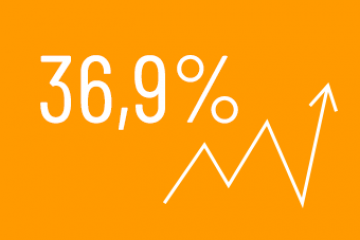The rise of sustainable finance
In an economic environment affected by trade tensions, historically low interest rates and the advent of new technology, many investors are revisiting their previously defined investment strategies in search of yield. But the quest for a financial return is not the only driver that shapes the increasingly global, financial market place. There is another clear trend emerging among investors, namely the desire to contribute to the Sustainable Development Goals (SDGs), and bring positive change to society. Investors increasingly search for sustainable finance investments and now require more transparent data on the companies and projects in which they invest.
From niche to mainstream
The European Investment Bank issued the world’s first Climate Awareness bond in 2007, and the World Bank followed suit with its first Green Bond the following year. Despite a rather slow start, sustainable finance has seen an impressive growth over the past years, both in terms of the range of financial instruments available and in terms of investment volumes. This is illustrated by the fact that global cumulative sustainable debt issuance reached USD 1 trillion in October 2019. It is worth noting that it took more than 8 years to raise the first USD 100 billion, but only 5 months to reach the last USD 100 billion needed to pass the USD 1 trillion mark. This reflects the growing demand for sustainable finance products and shows the pace at which sustainable finance is gaining traction.
Sustainable finance was born from investors’ need for purpose in their investment decisions. The establishment of the SDGs and the Paris agreement on climate change in 2015 led to a new awareness among investors of the need to channel private investments into projects supporting sustainable development and the transition into a low-carbon economy. Today, investors want to know what impact their investments will have on future generations. More and more investors base their investment decisions not only on their financial acumen and risk profile, but also on their personal values.
Investors are looking for investments that support sustainable development and the fight against climate change, while at the same time generating a financial return. As multiple surveys and reports have suggested recently, there is no contradiction in this.
Unmet investor demand
Green bonds were the first sustainable finance instruments on the market and still are the leading type of sustainable debt security. This year, the market for green bonds is booming. In the first half of 2019, new green bond issuance in line with international standards grew by 48% globally compared to the same period last year. As of October 2019, new green bonds issuance had reached USD 211.8 billion globally.
Despite the steep increase in green bond issuance, investors call for more. The Climate Bond Initiative, an international not-for-profit organisation working to mobilise capital markets to fight climate change, recently conducted a survey among forty-eight of the largest Europe-based fixed-income managers with combined assets under management of EUR 13.7 trillion.
The survey was sponsored by the Luxembourg Stock Exchange and other institutions promoting the sustainable finance agenda, and looked at how the fixed-income investment community is addressing climate change through their investment decisions. The survey report, entitled CBI Green Bond European Investor Survey 2019, suggests that there is currently an unmet demand for green bonds. Respondents call for more diversification in green bond issuers, and would particularly like to see more green bonds from corporate issuers. Almost two-thirds of respondents said they prefer green bonds to traditional bonds where available and competitively priced.
Call for transparency
Another interesting trend reflecting investors’ value-based decision-making process is the demand for more transparent data on the companies and projects in which they consider investing. Investors are now using what previously was referred to as non-financial data as part of their core investment analysis, to better predict a company’s future performance and risks. After all, sustainability is about generating long-term value while reducing risks, and these are aspects most investors appreciate.
As a response to investor demand for more information about companies’ sustainability approaches, more and more organisations are embedding Environmental, Social and Governance aspects into their business strategy and decision-making processes, and furthermore providing transparency to investors and other stakeholders through ESG reports.
Investors are drivers of change and have the power to make finance greener and more sustainable through their investment choices. Any company wanting to secure future growth and interest from investors should therefore look carefully at incorporating Environmental, Social and Governance aspects into their business models, including their supply chains. One thing is for sure, sustainable finance is here to stay and will become the new norm.
La finance durable est née du besoin des investisseurs de détenir des investissement qui soutiennent le développement durable et la lutte contre le changement climatique, tout en générant un rendement financier. Il est possible d'appliquer ces mêmes critères de durabilité aux investissements sous-jacents à son contrat d'assurance-vie en sélectionnant des fonds intègrant des aspects Environnementaux, Sociaux et de Gouvernance dans leur modèle de gestion.





























